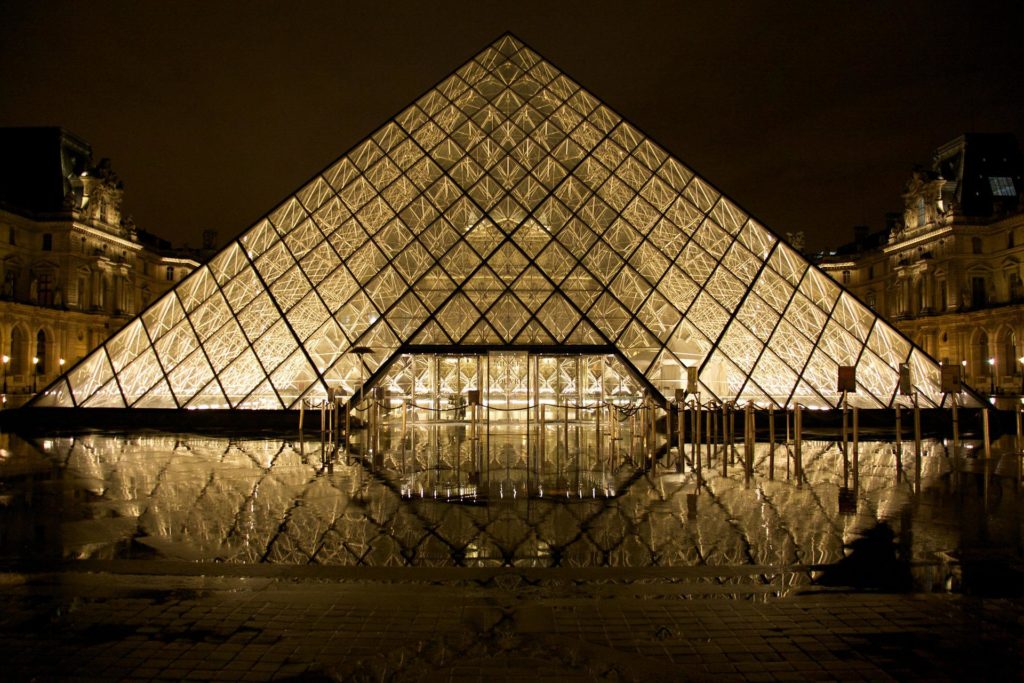When I was a child, I was subjected to a seemingly endless line of adults asking me what I wanted to be when I grew up. And over the years, my answer changed constantly. Writer, animator, film director. Work for Disney. But for about a year in my early teens, the answer was always the same. Egyptologist. I was fascinated by all things Egypt, and I dreamed of one day seeing the pyramids up close. While I have yet to see those wonders of the ancient world in person, I’m still fascinated by ancient Egypt. And as it turns out, this fascination has a lot to do with Napoléon. It would seem that my connection to France began long before I ever thought I would make this country my home.
Description de l’Égypte and Egyptomania
In 1798, Napoléon Bonaparte began a military campaign with the goal of annexing Egypt and establishing a French presence in the Middle East. Napoléon’s troops landed in Alexandria on July 1st, and he immediately issued a proclamation to the Egyptian people. He stated, “I come to restore your rights”. Unsurprisingly, the people of Egypt were not convinced. Napoléon proceeded to lead his troops on a brutal campaign through Egypt and Syria, before transferring power to one of his generals and abandoning Egypt to return to France. By 1801, the French Army in Egypt had been soundly defeated.
What is notable about this campaign, other than Napoléon’s staggering decision to cut out early, is that 167 scholars and scientists accompanied the French Army on this journey. They later published a comprehensive scientific study called Description de l’Égypte. This series of publications documented all aspects of ancient Egypt. More importantly, it kickstarted Egyptomania in Europe. The public became fascinated with all things ancient Egypt, and the discipline of Egyptology was born. Nearly 200 years later, I seriously considered making it my career.
Champollion and Hieroglyphics
Of course, I did not end up becoming an Egyptologist. But I still love learning about all things ancient Egypt. Thankfully, living in Paris gives me plenty of opportunity to do so. For example, one of the most important discoveries during Napoléon’s Egyptian campaign was that of the Rosetta Stone. This tablet, inscribed with the same text in three languages, proved to be the key to deciphering hieroglyphics. It was a Frenchman, Jean-François Champollion, who became the first person to do so in the 1820s. His discovery only served to further fuel Egyptomania, as scholars were now able to study Egypt’s history directly.
Earlier this year, the National Library of France hosted an exhibition dedicated to Champollion’s discovery and the arduous translation process it required. I of course paid a visit to this exhibition, and I spent hours staring at Champollion’s work and various hieroglyphic texts. And I wasn’t alone. The exhibition was packed with people of all ages. It would seem that the fascination with ancient Egypt that Napoléon sparked over 200 years ago is still going strong.
Egypt in Paris
Today, vestiges of Egyptomania can be seen all over Paris. The sphinxes in the Fontaine du Palmier in Place du Châtelet. The Egyptian symbols and imagery that can be found on buildings throughout the city. And of course, the 4,000 year old Egyptian obelisk that stands in the middle of Place de la Concorde. But perhaps the most famous example of Egypt’s continuing influence on France is the Louvre pyramids. These towering glass structures were built in 1988 to become the new entrance to the Louvre museum. Famously, they were instantly loathed by most Parisians, and this sentiment pervades even now.
Me, however? I love them. I love the contrast between new and old that they bring to the exterior facade of the Louvre. And at night, when they are lit up, they are breathtakingly beautiful. Just don’t tell French immigration I feel this way. My visa renewal is coming up and I don’t want this opinion to count against me.
Laura Moore is a professional storyteller who loves history and the many stories that make Paris one of the most fascinating cities in the world. Join one of her signature tours to learn the story of a city.




